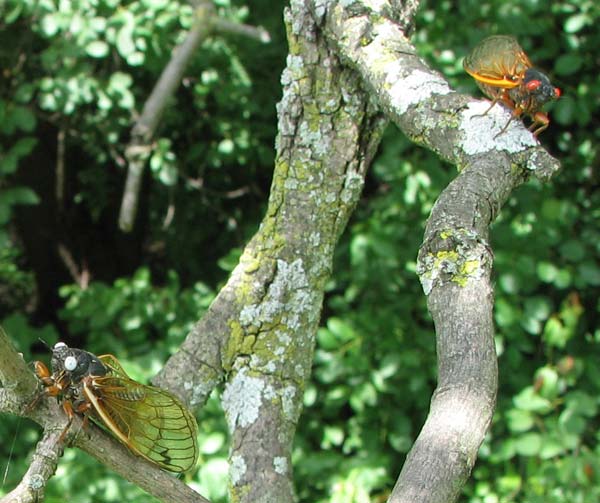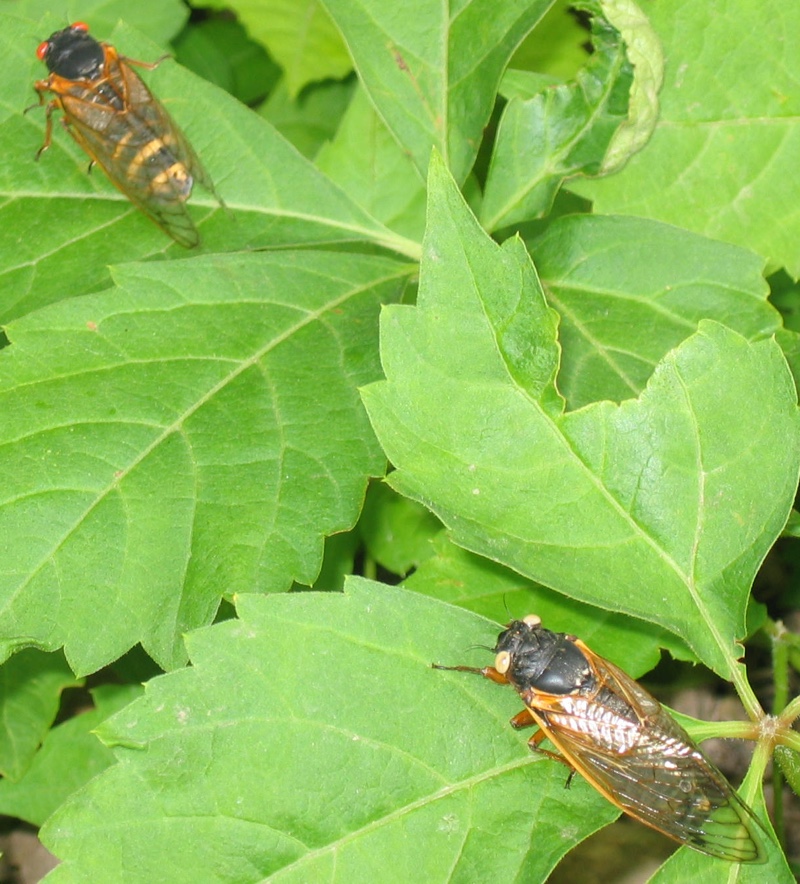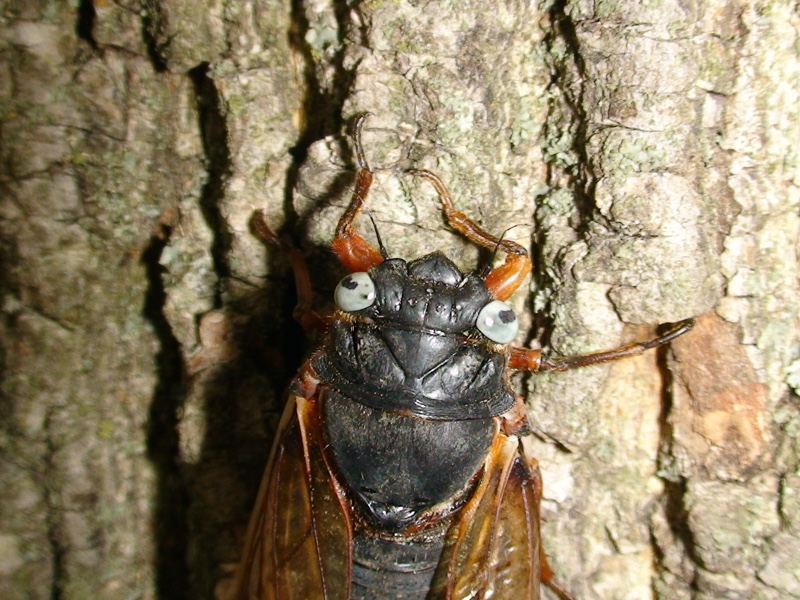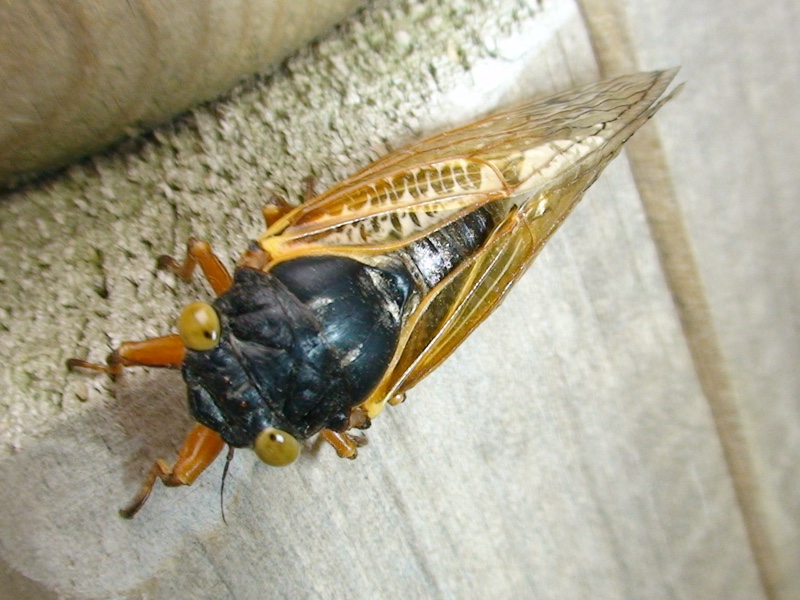In this video we see a Magicicada cicada ovipositing:
Genera of cicadas.
Here’s 3 Cicada Contest winners.
Jen Swofford in Highland Park, IL:

Mark Muto in North Riverside, IL:

Sonja Kassebaum of Gurnee, IL:


Paula King’s son found this cicada in Villa Park, IL. In the picture they eyes are white, but Paula observed that the eye color would actually vacillate between blue and white over the course of time. That’s an important observation.

Here’s another picture from Paula of a cicada with mustard colored eyes:

A photo of cicadas mating by Christina T.

Cicada Mania, best of 2007, part 1 by Dan from Cicada Mania on Vimeo.
Cicada Mania Best of 2007 part 2 by Dan from Cicada Mania on Vimeo.
Cicada Mania, Best of 2007, part 3 by Dan from Cicada Mania on Vimeo.
The following videos chronicle the Brood XIII Magicicada emergence in 2007 at the Forrest Preserve park outside of Chicago. The videos are by Roy Troutman.
Crowd watching Magicicada emergence at Ryerson Woods from Roy Troutman on Vimeo.
Observing magicicada emergence at Ryerson Woods from Roy Troutman on Vimeo.
Observing Magicicada emergence at Ryerson Woods from Roy Troutman on Vimeo.

Another cicada photo from the Ryerson Woods.
Sunday I spent the day at the Ryerson Woods Cicada Mania festival. The Lake County Forest Preserve folks did a fantastic job putting this event together: they had music, fun for kids like face painting and a costume contest, and entertaining & informative talks by cicada expert Gene Kritsky. I spent more time filming with the Fuji TV crew, looking for more white-eyed cicadas (no luck), and exploring trails. At the very end of my visit I discovered a large emergence of cicadas out by the river between a footbridge and a cabin (I think it was called the Stokes cabin). Around 5:30 pm I heard a sound like boiling water; I looked down and thousands of cicada nymphs were crawling from the ground. The experience was sublime. I even found a brown-eyed cicada.
A big shout out to everyone I saw wearing one of our t-shirts!
There are more cicada hikes going on at Ryerson this weekend. If you go, I recommend you go to the cabin by the river. This weekend there should be plenty more cicadas to see and hear.
Monday I made it out to the Brookfield Zoo, which is about 25 minutes south of O’Hare. I read that there was a large emergence of cicadas at the zoo and that the animals were feasting on the cicadas — I had to check it out. When I pulled into the parking lot of the zoo the noise of the cicadas was overwhelming! Kids were screaming “CICADA” and spending more time looking at cicadas than the zebras and bears. Most of the cicadas I saw and heard at the zoo were Magicicada cassini (small with all-black abdomens). I don’t remember seeing any animals eating cicadas — maybe they’ve had their fill. The Zoo carousel had two cicadas rides! How cool is that?


This is an example of lousy photo composition. If I were smart, I would have had a zoo animal in the background to prove this was at the zoo:

More video and photos to come... check back often…
No thanks to Sony, whose Handycam takes so-so video and isn’t compatible with Macs, Best Buy for lying to me when I asked if the Handycam was Mac compatible, Apple, for iMovie which does not support muxed Mpeg 2 video (which is what the Handycam makes), and Cannon, for making a digital camera with a macro setting that essentially turns every photo into a fuzzy blob.
Nothing to do with my trip to Chicago, but here’s a link to www.seventeenyearcicada.com. John’s been posting this URL on the message board every other day. Maybe if I post it on the homepage, he’ll chill out.